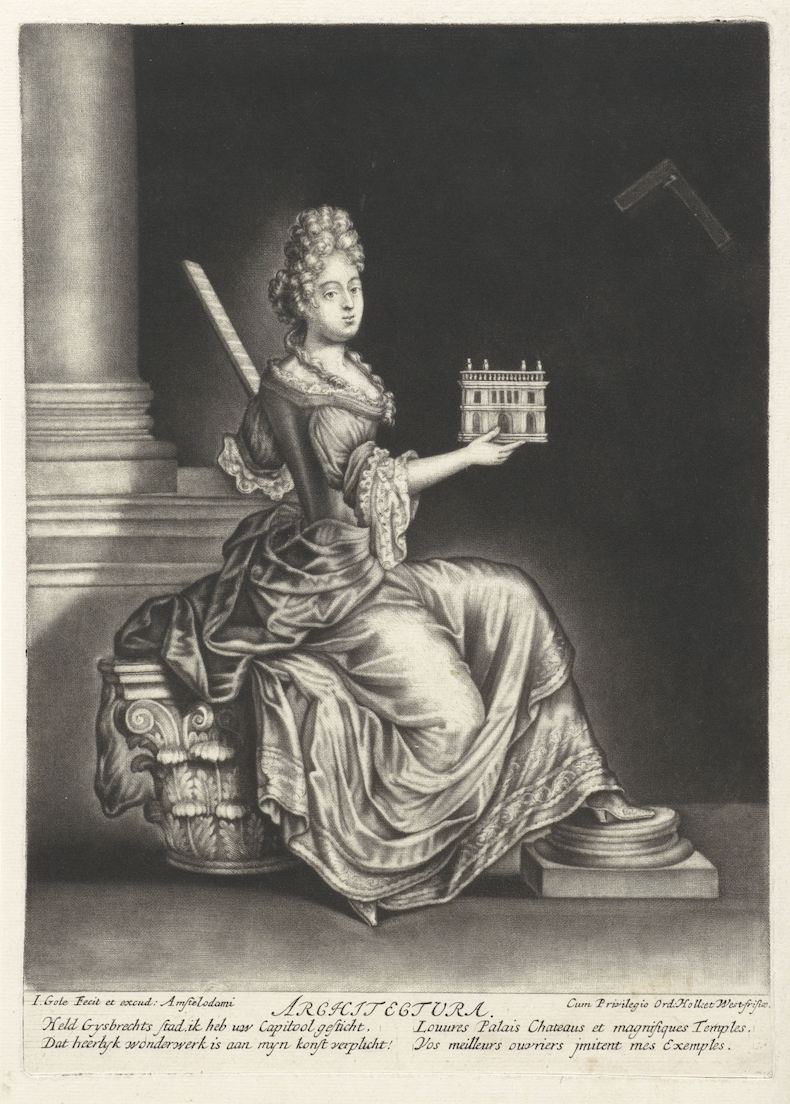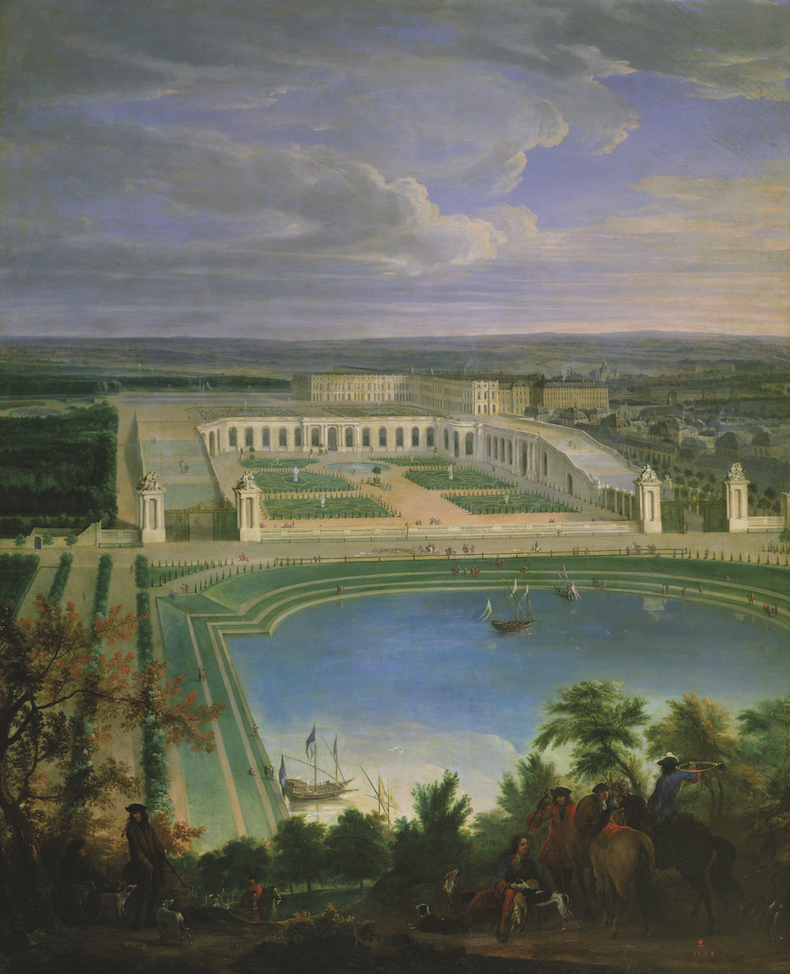This review of the July/August 2024 issue of Apollo. Preview and subscribe here.
To build might be considered a natural activity for royalty: to manifest majesty and to improve the fabric of the state. But how far were kings, queens, princes and princesses actually involved in the design of the buildings they commissioned? Royalty and Architecture offers a series of case studies in response to this question, examining rulers from the 17th century to the present day. Fourteen chapters, written by leading scholars in their fields, are arranged chronologically and take in the Papal States, France, Germany, Russia, Sweden, Poland and Great Britain. In light of historiographical shifts towards popular rather than elite subjects, histories of making and decolonisation, sceptics might question the need for further interrogation of the role of royalty, but the specific focus of this study provides fresh justification.
 The consideration of architecture as a suitable endeavour for royalty arose from the Renaissance idea of architecture as a noble pursuit that encompassed subjects including mathematics, geometry and history. It had important implications for military success, the projection of authority and the common good. Young royals therefore often received architectural education in the form of drawing classes. In the case of Gustav III of Sweden, examined in an essay by Magnus Olausson, it led to a lifelong passion, testified to by more than 200 surviving architectural drawings in his hand. Royal libraries included books of architecture and design, and monarchs were the recipients of dedications from architectural authors keen to secure patronage and commissions.
The consideration of architecture as a suitable endeavour for royalty arose from the Renaissance idea of architecture as a noble pursuit that encompassed subjects including mathematics, geometry and history. It had important implications for military success, the projection of authority and the common good. Young royals therefore often received architectural education in the form of drawing classes. In the case of Gustav III of Sweden, examined in an essay by Magnus Olausson, it led to a lifelong passion, testified to by more than 200 surviving architectural drawings in his hand. Royal libraries included books of architecture and design, and monarchs were the recipients of dedications from architectural authors keen to secure patronage and commissions.
John Goodall’s opening essay identifies magnificence as the key distinguishing feature of royal building projects. As Louis XIV wrote in the handbook of kingliness that he prepared for his son, the two ways in which a monarch could achieve gloire and secure his reputation for posterity were military success and building. Goodall underlines the importance of royal architecture for state occasions as the stage for ‘the performance of monarchy’. To illustrate his point, he offers a perceptive account of the architectural settings of Elizabeth II’s funeral in September 2022, demonstrating that the relationship between royalty and buildings is a contemporary as well as historical subject.
Although the public presentation of monarchy is key to many of the buildings that are examined in this volume, the emphasis here is on their direct personal engagement with architectural matters. Elisabeth Kieven’s lively essay shows us Pope Alexander VII (the papacy was an elective monarchy) not only commissioning works to transform the Eternal City, but also drawing with Bernini, researching ancient porticos to inform the square at St Peter’s, and helping to set up the columns there with the aid of his telescope. Likewise, in Simon Thurley’s essay on the later Stuart monarchs in England, we find Charles II sketching designs for Whitehall on paper, requesting plans of the Louvre for comparison, expressing his vision for the rebuilding of London after the Great Fire and approving Christopher Wren’s designs for the new St Paul’s Cathedral. Although building projects were inherently self-aggrandising, many of the monarchs were motivated to seek public benefit, as evidenced in Barbara Arciszewska’s chapter on the campaign by King Stanislaw August Poniatowski to revive Poland through architecture.
Lazienki Palace (1794), Jan Piotr Norblin. Princes Czartoryski Museum; photo: Anna Olchawska Karol Kowalik

The question of direct involvement and responsibility can, however, be a red herring; invariably, the quest to determine the agency of an individual underscores that architecture is and always has been a collaborative enterprise. An essay extracted by Clive Aslet from David Watkin’s The Architect King, published by the Royal Collection in 2004, illustrates this neatly: George III received ‘near-professional training’ in architecture from his tutor William Chambers on three days each week. In time, he commissioned Chambers himself, as well as James Stuart, Robert Adam and James Wyatt, and worked closely with them.
Architecture (n.d.), Jacob Gole. Rijksmuseum, Amsterdam

Female rulers feature prominently. Emily Roy’s essay on architecture and the Russian court in the 18th and early 19th centuries analyses architectural projects masterminded by Empress Anna Ioannovna, Empress Elizabeth I and Catherine the Great. The last had no blood claim to the throne but fashioned herself as the inheritor of Peter the Great’s agenda. She was directly involved in initiating major projects in St Petersburg as well as metropolitan improvements to many Russian cities in the form of canals, paved streets and bridges, and the foundation of more than 200 new towns organised on radial or grid plans.
Style is never far from the surface. Imperial Rome was of continuing relevance as a model for European monarchs who drew on classical forms to convey their status and their aspirations both for themselves and their countries. One might even say that classicism is the stylistic mode of monarchy, though there are also medieval moments, such as Hugh May’s work at Windsor and Wyatt’s plans for a Gothic palace at Richmond, which was begun in 1801 but never fully realised.
View of the Orangery and the Palace of Versailles seen from Satory (c. 1696). Châteaux de Versailles et de Trianon. Photo by Art Images via Getty Images

In his essay on Louis XIV, Ian Thompson explains how the creation of Versailles took vast resources, including at one point employing one tenth of the French army but, on the other hand, he describes the tent that Louis had erected at the site of the Grand Trianon so that he could spend time there monitoring its progress. Thompson concludes that the Sun King undoubtedly had ‘an architect’s breath of vision’. Perhaps that comes close to identifying the link between royalty and architecture: that architecture manifests control (or the fantasy of control) over one’s dominions. But this study does not present a litany of megalomaniacs. Despite the extreme magnificence of many of the projects, and the public nature of others, the overwhelming impression is of individuals, given the privilege of exercising architectural power by their position but driven by intimate motivations: intellect, enjoyment, conscience and ability.
Royalty and Architecture: Visions and Ambitions of European Monarchs and Nobility, edited by Clive Aslet and Frank Salmon, is published by Stolpe Publishing.
From the July/August 2024 issue of Apollo. Preview and subscribe here.



